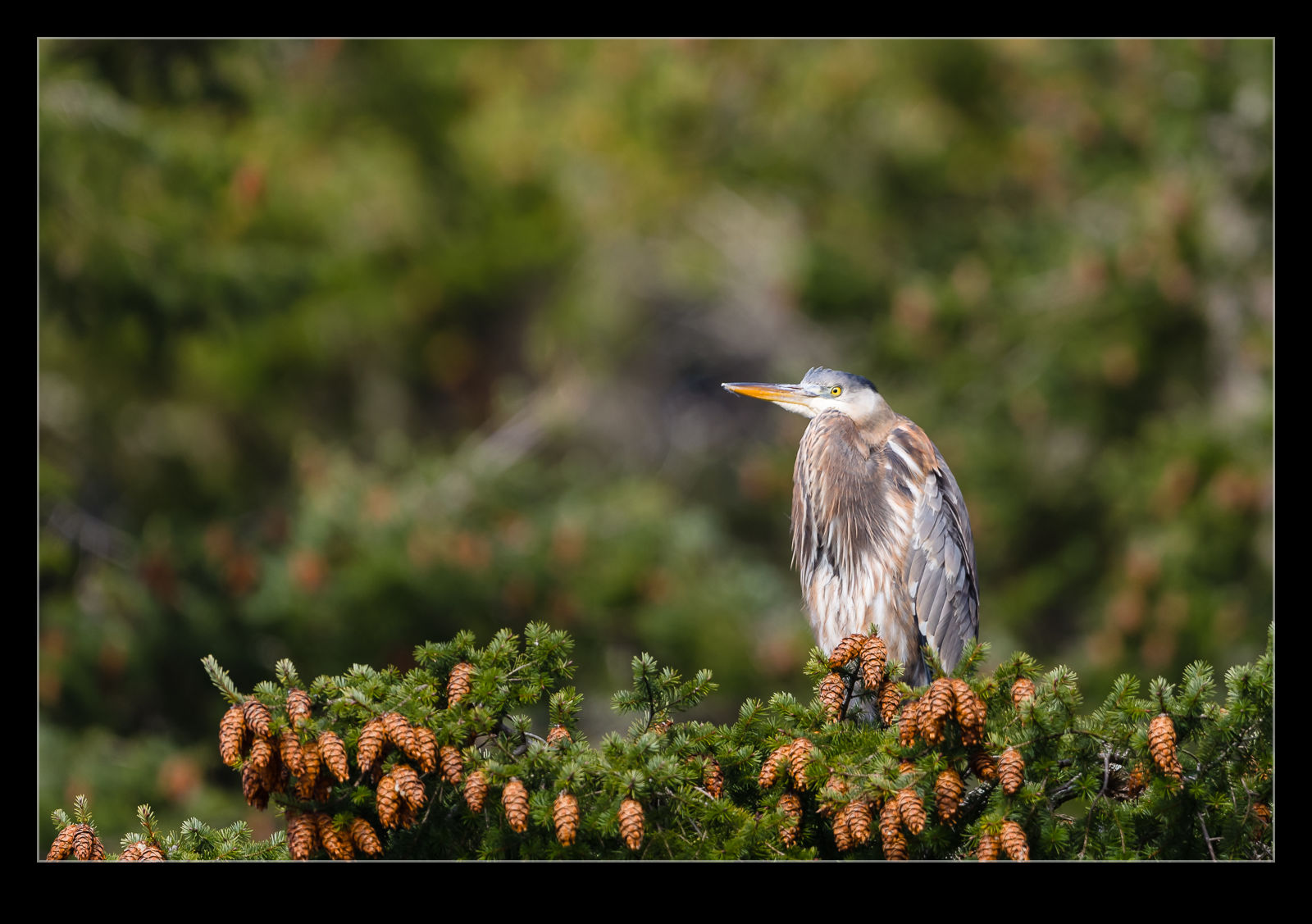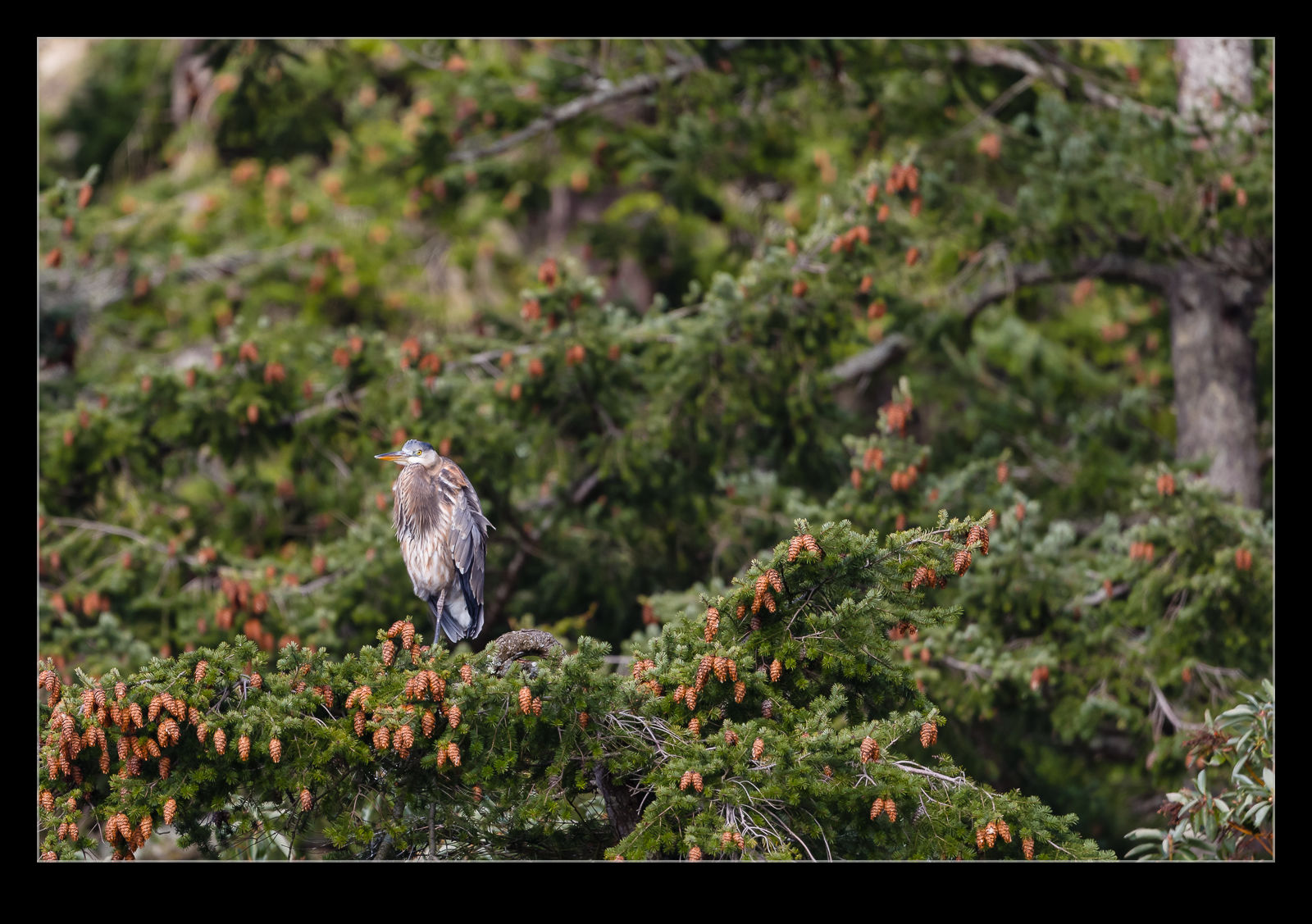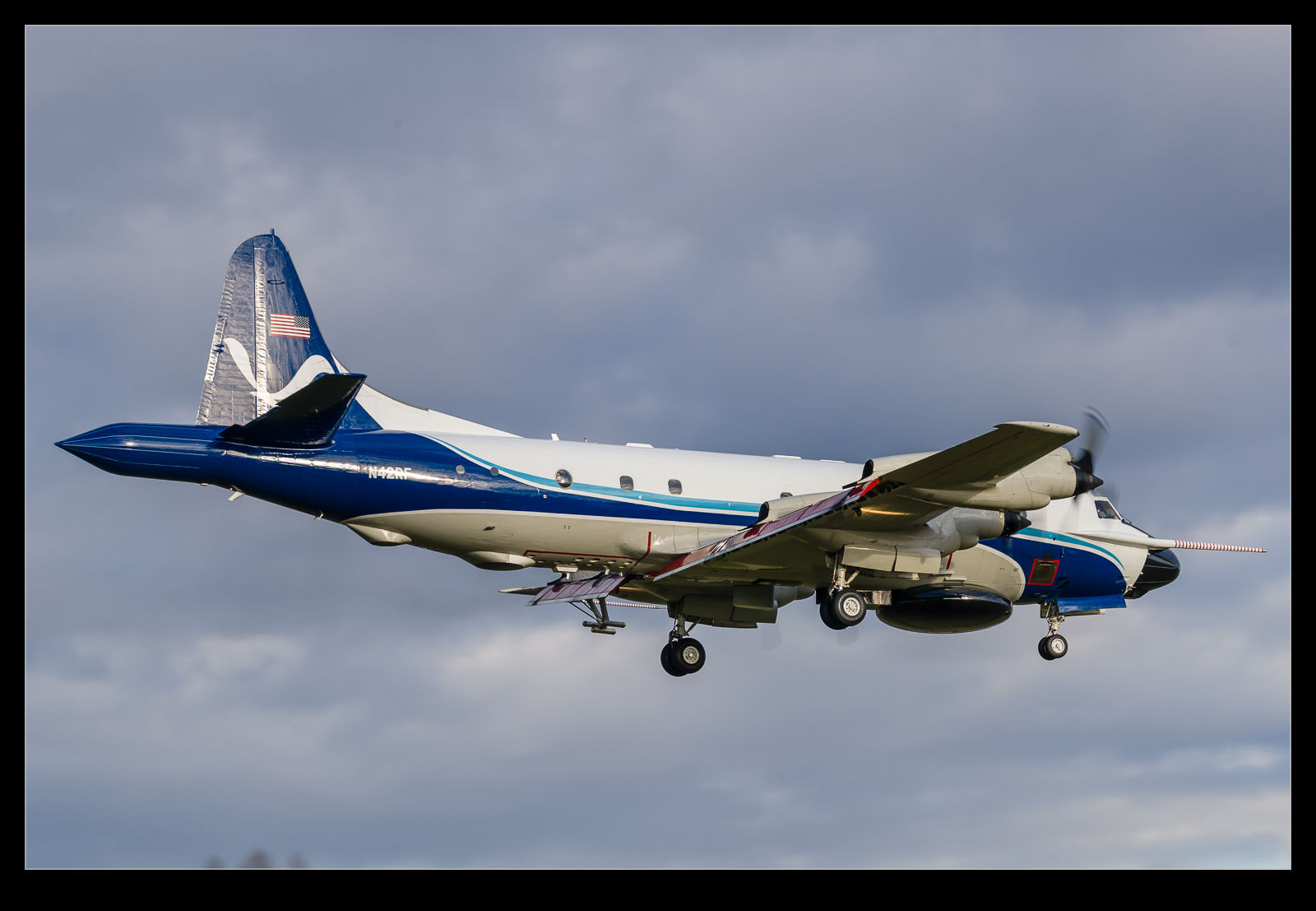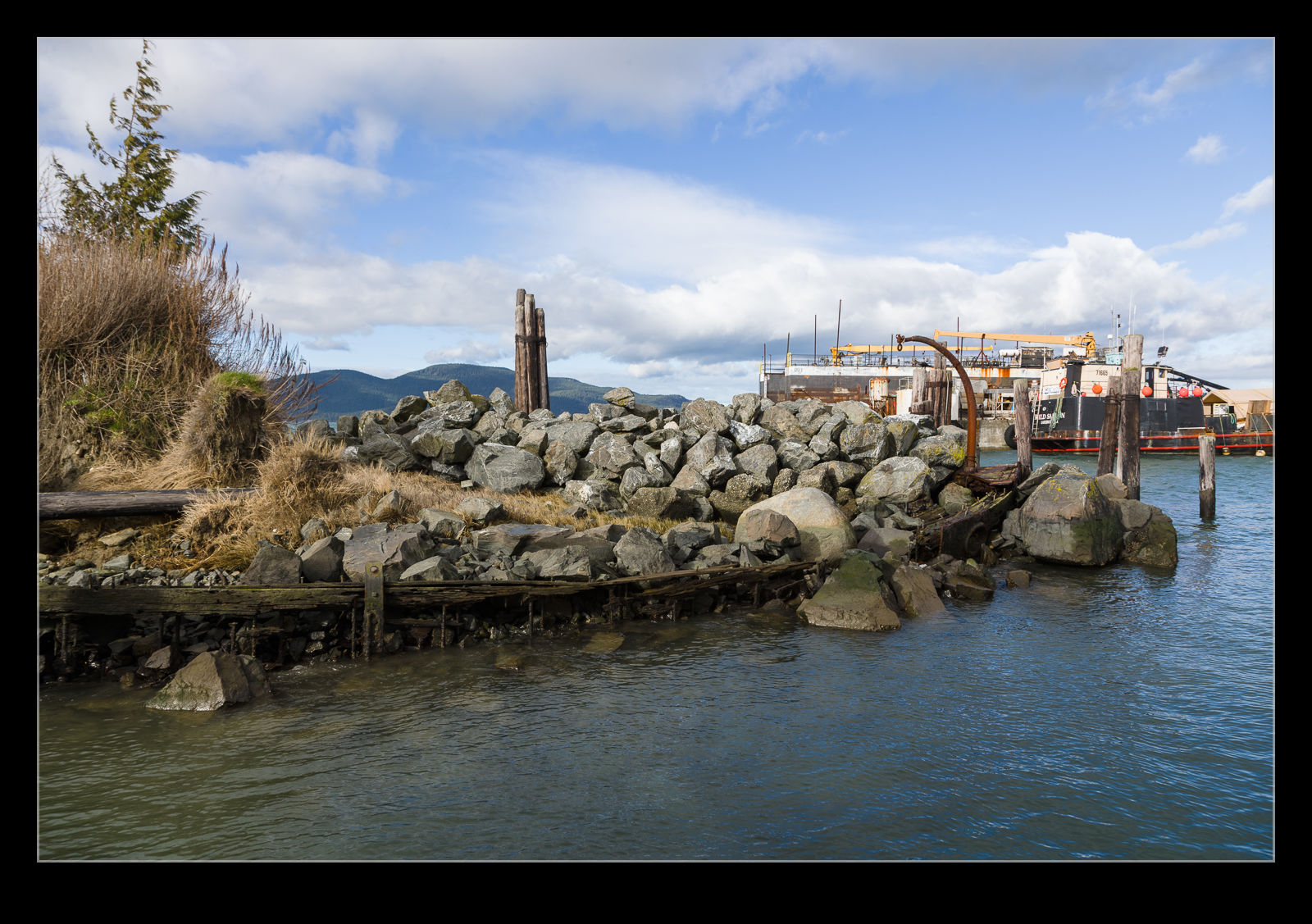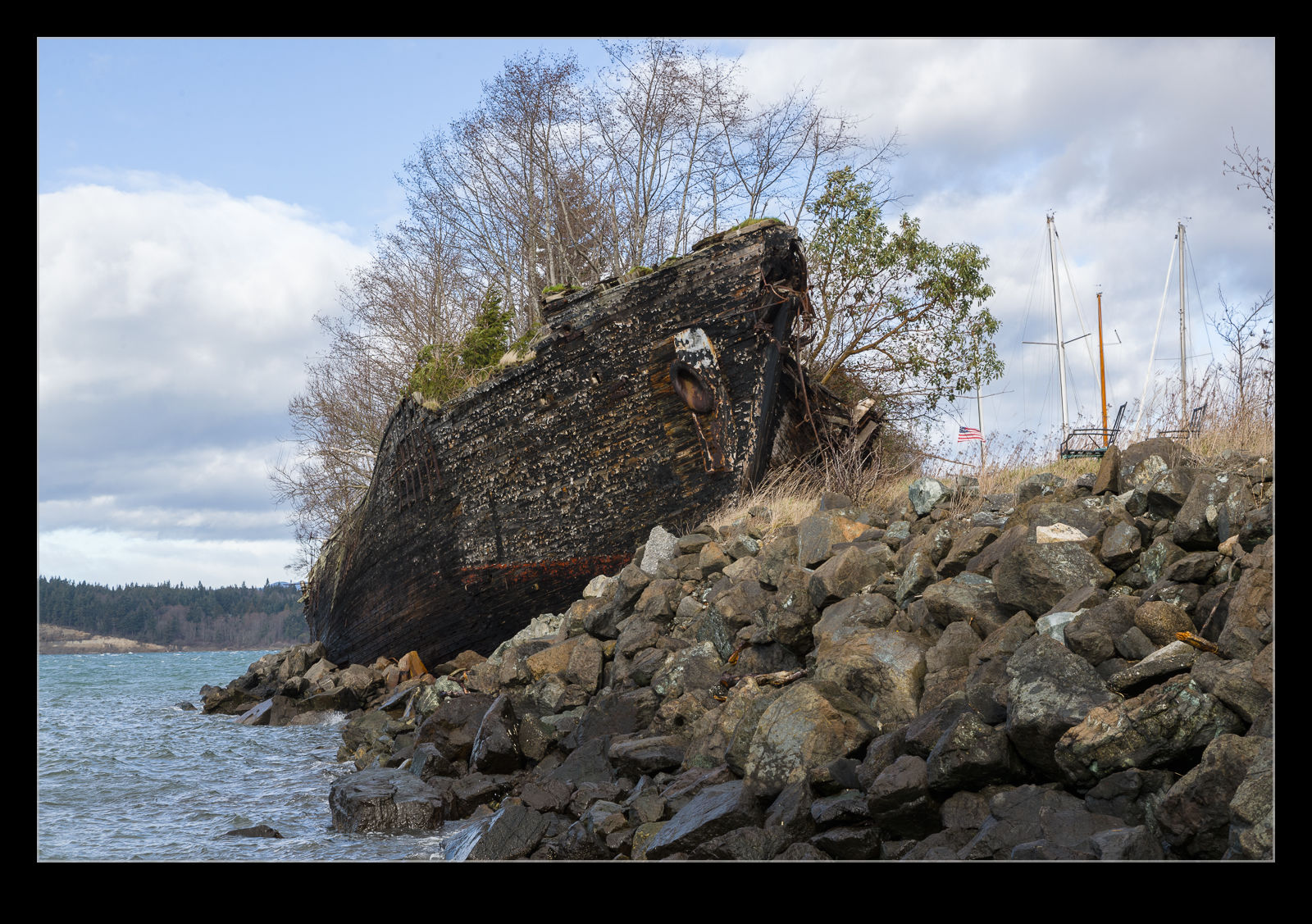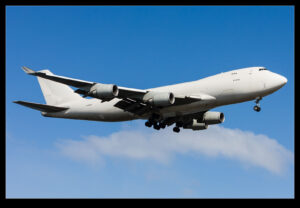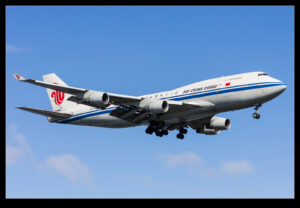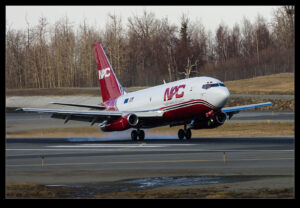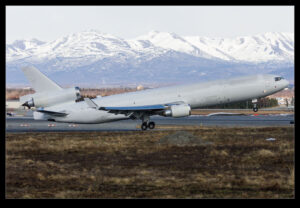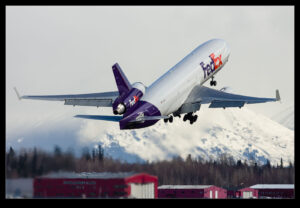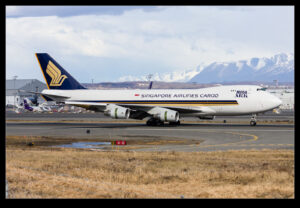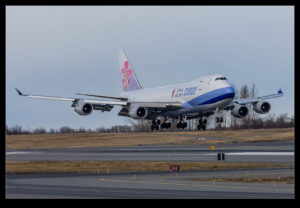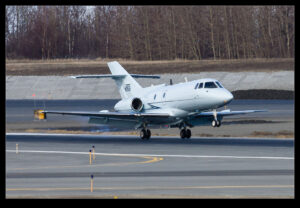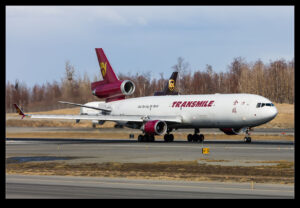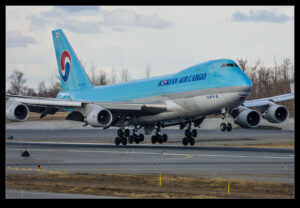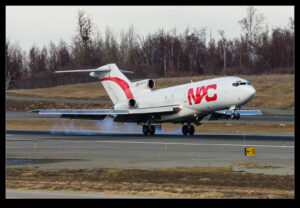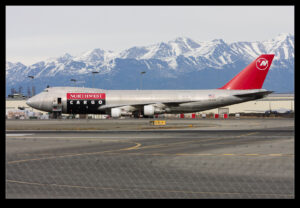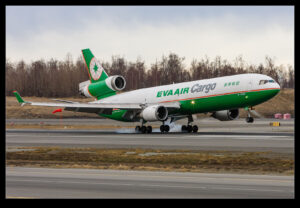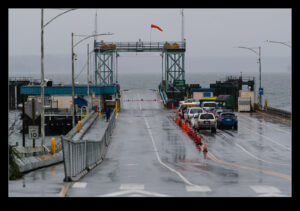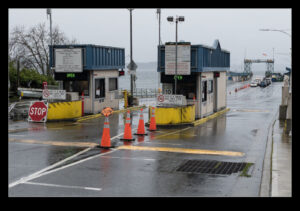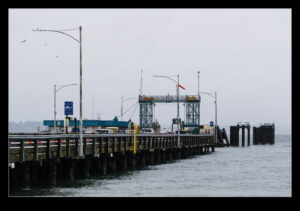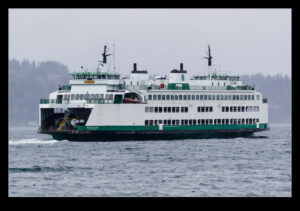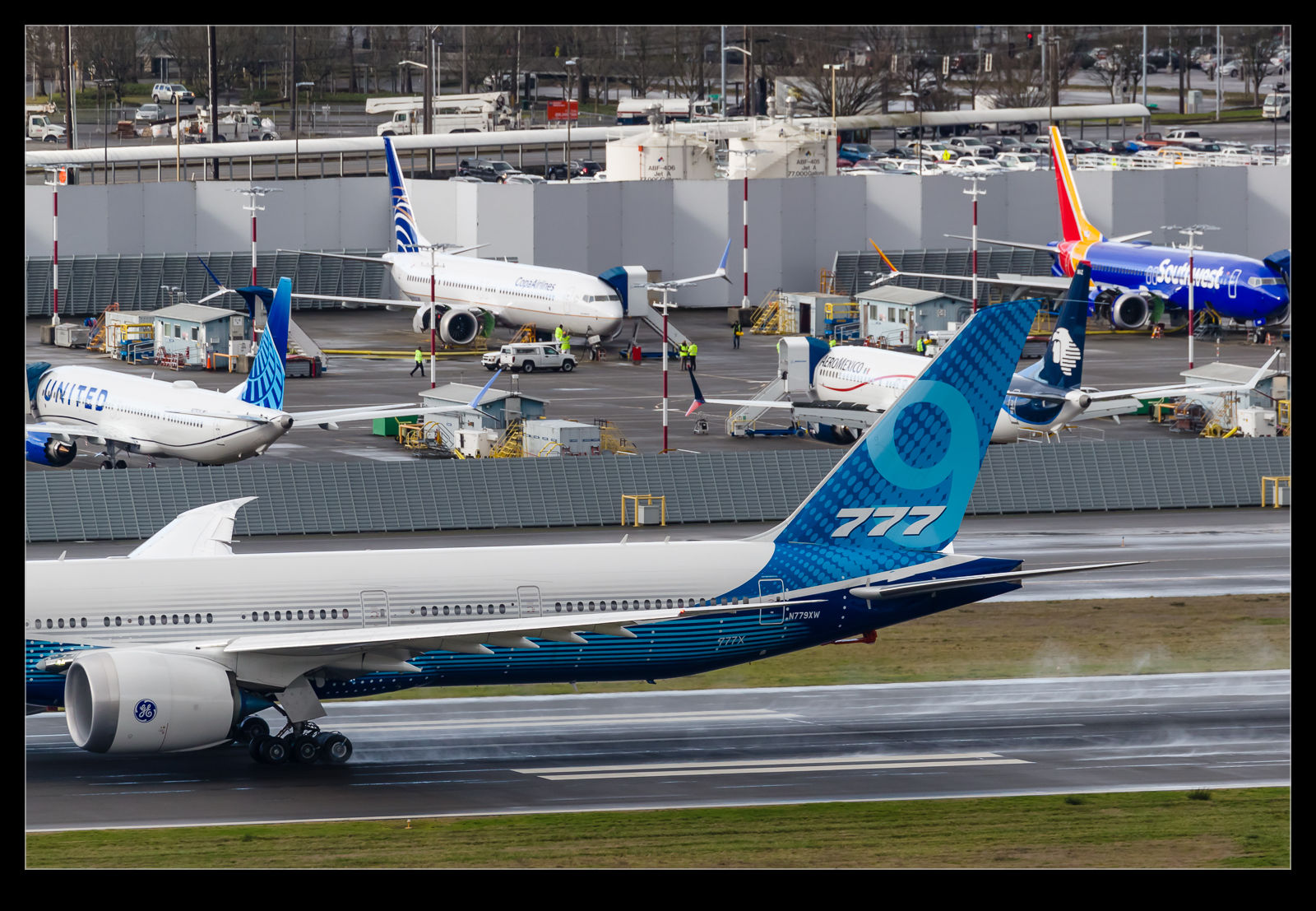 While awaiting the NOAA arrival, I happened to shoot a 737 that was coming directly overhead on its way to SeaTac. I don’t shoot much of these flights but every once in a while, I do like to try and get a symmetrical shot from directly beneath the jet just for the fun of it. As this one came over, I just assumed it was another Alaska 737-900ER since they come in all the time. However, when I looked closely at the shot, I realized it was a United jet and, more importantly, it was actually a Max9. Turns out it was on its delivery flight from Boeing Field so must have only left a few minutes before.
While awaiting the NOAA arrival, I happened to shoot a 737 that was coming directly overhead on its way to SeaTac. I don’t shoot much of these flights but every once in a while, I do like to try and get a symmetrical shot from directly beneath the jet just for the fun of it. As this one came over, I just assumed it was another Alaska 737-900ER since they come in all the time. However, when I looked closely at the shot, I realized it was a United jet and, more importantly, it was actually a Max9. Turns out it was on its delivery flight from Boeing Field so must have only left a few minutes before.
Tag Archives: photo
Who Can Identify a Heron?
 Anyone a bird specialist reading this? I saw this heron sitting in the trees along the shore at Camano Island. It didn’t seem in a hurry to go anywhere and wasn’t spooked as I got closer to its perch to get some shots. It was high enough that it didn’t see me as relevant. I have seen Great Blue Herons but this didn’t look like that (it could be and I just didn’t recognize it). If you know what it is, please let me know.
Anyone a bird specialist reading this? I saw this heron sitting in the trees along the shore at Camano Island. It didn’t seem in a hurry to go anywhere and wasn’t spooked as I got closer to its perch to get some shots. It was high enough that it didn’t see me as relevant. I have seen Great Blue Herons but this didn’t look like that (it could be and I just didn’t recognize it). If you know what it is, please let me know.
The Earliest A320s
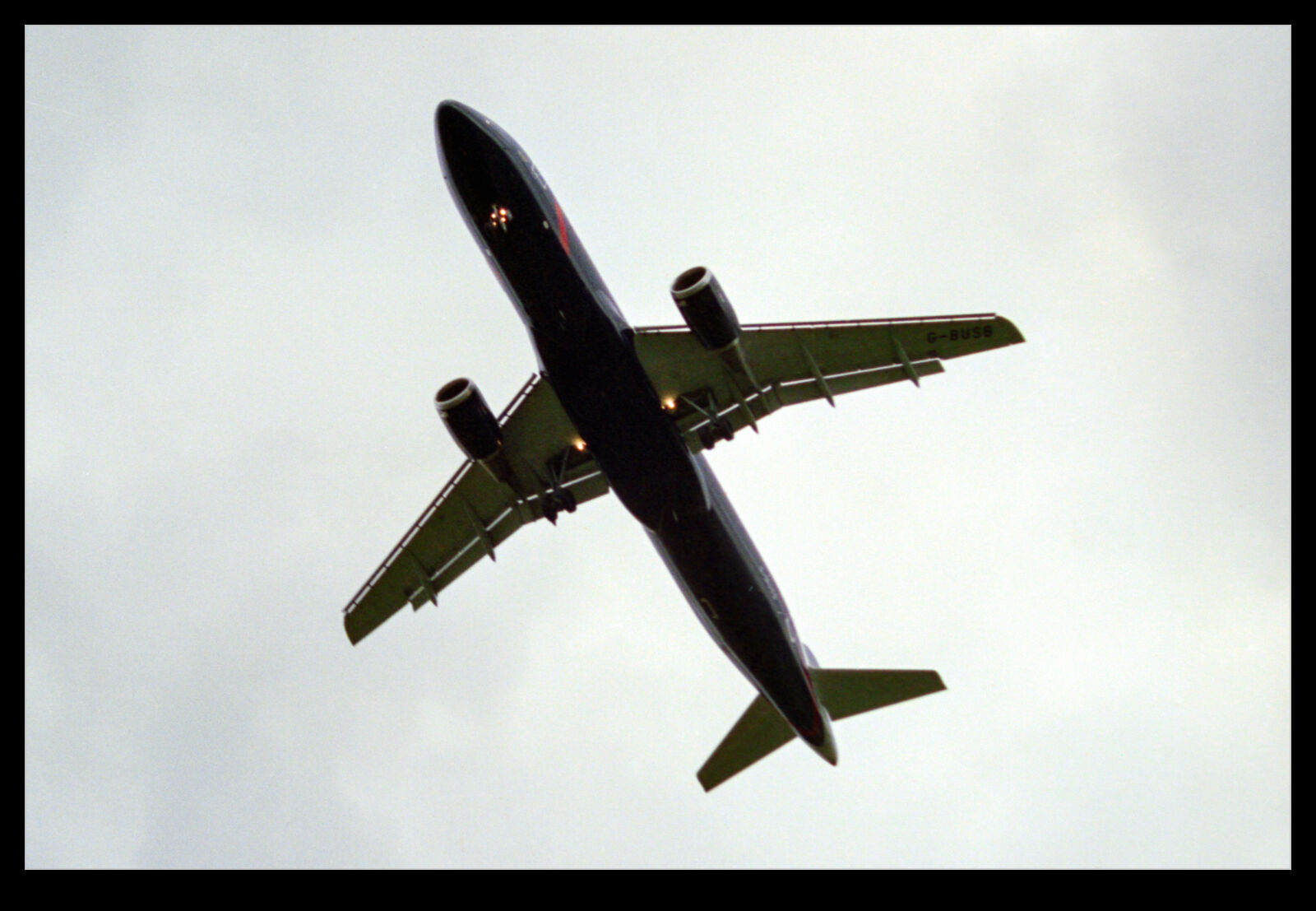 A launch customer for the A320 was British Caledonian Airways. Unfortunately for those that liked Scottish themed airlines, BCal was bought by British Airways before the jets were delivered. I recall some dispute with Airbus about who would pay for the repaint of the first jet but maybe that is an urban legend. I think there were ten of them and BA took delivery. However, they were an orphan fleet for a long time in amongst all of the BA 737s and 757s.
A launch customer for the A320 was British Caledonian Airways. Unfortunately for those that liked Scottish themed airlines, BCal was bought by British Airways before the jets were delivered. I recall some dispute with Airbus about who would pay for the repaint of the first jet but maybe that is an urban legend. I think there were ten of them and BA took delivery. However, they were an orphan fleet for a long time in amongst all of the BA 737s and 757s.
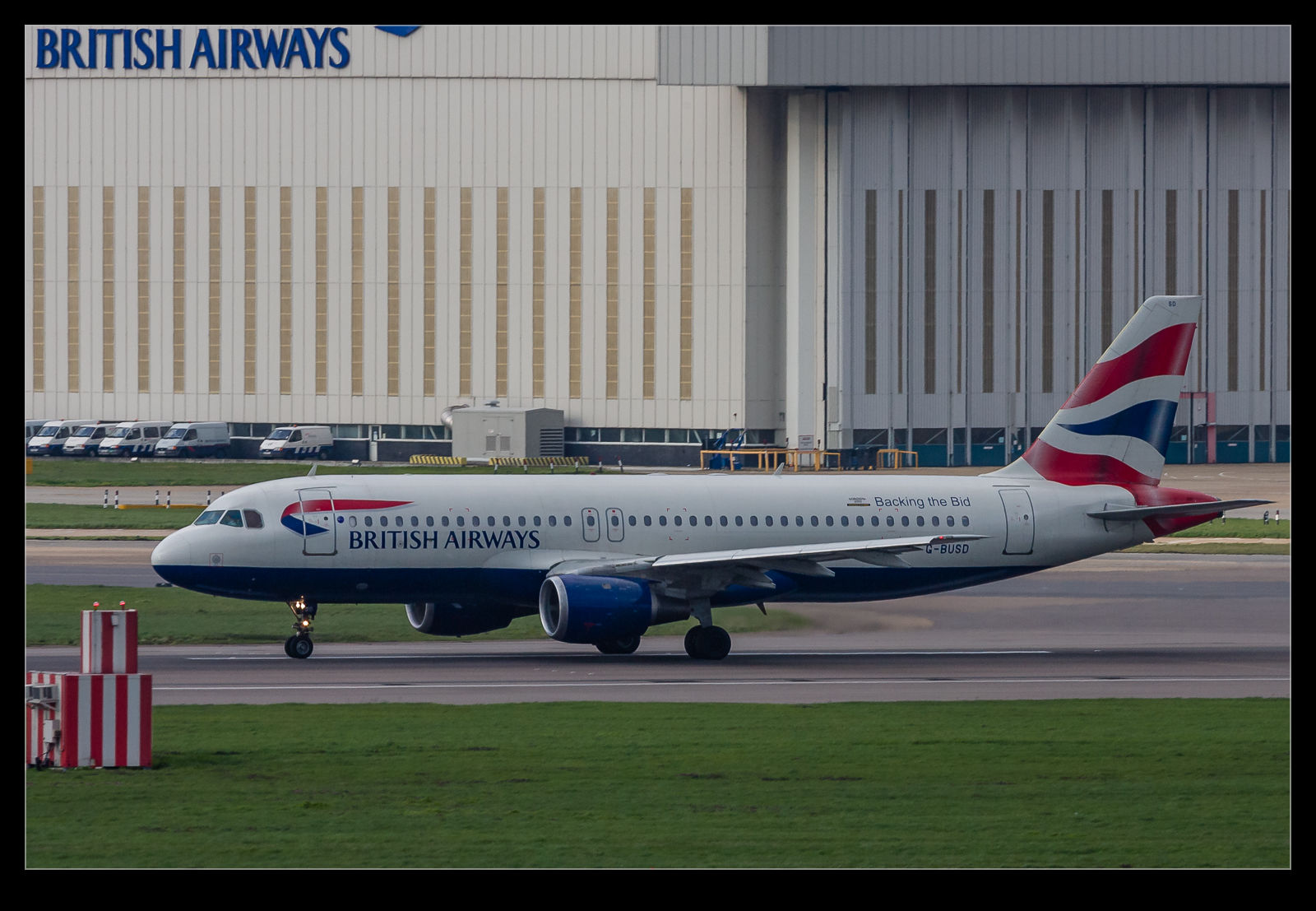 That changed when BA went to an all A320 family short haul fleet breaking their long standing use of Boeing jets (plus some other stragglers). However, that cam much later. The earliest jets were A320-100s and these didn’t have the wing tip fences. The A320-200 followed very soon afterwards. Here are two shots of them. One is from 1988 with an A320 in BA’s Landor scheme on approach over my head to Gatwick. The other shot is a late in life shot of one of the earliest jets taken at Heathrow. These early examples are all gone now.
That changed when BA went to an all A320 family short haul fleet breaking their long standing use of Boeing jets (plus some other stragglers). However, that cam much later. The earliest jets were A320-100s and these didn’t have the wing tip fences. The A320-200 followed very soon afterwards. Here are two shots of them. One is from 1988 with an A320 in BA’s Landor scheme on approach over my head to Gatwick. The other shot is a late in life shot of one of the earliest jets taken at Heathrow. These early examples are all gone now.
Trumpeter Swans on Fir Island
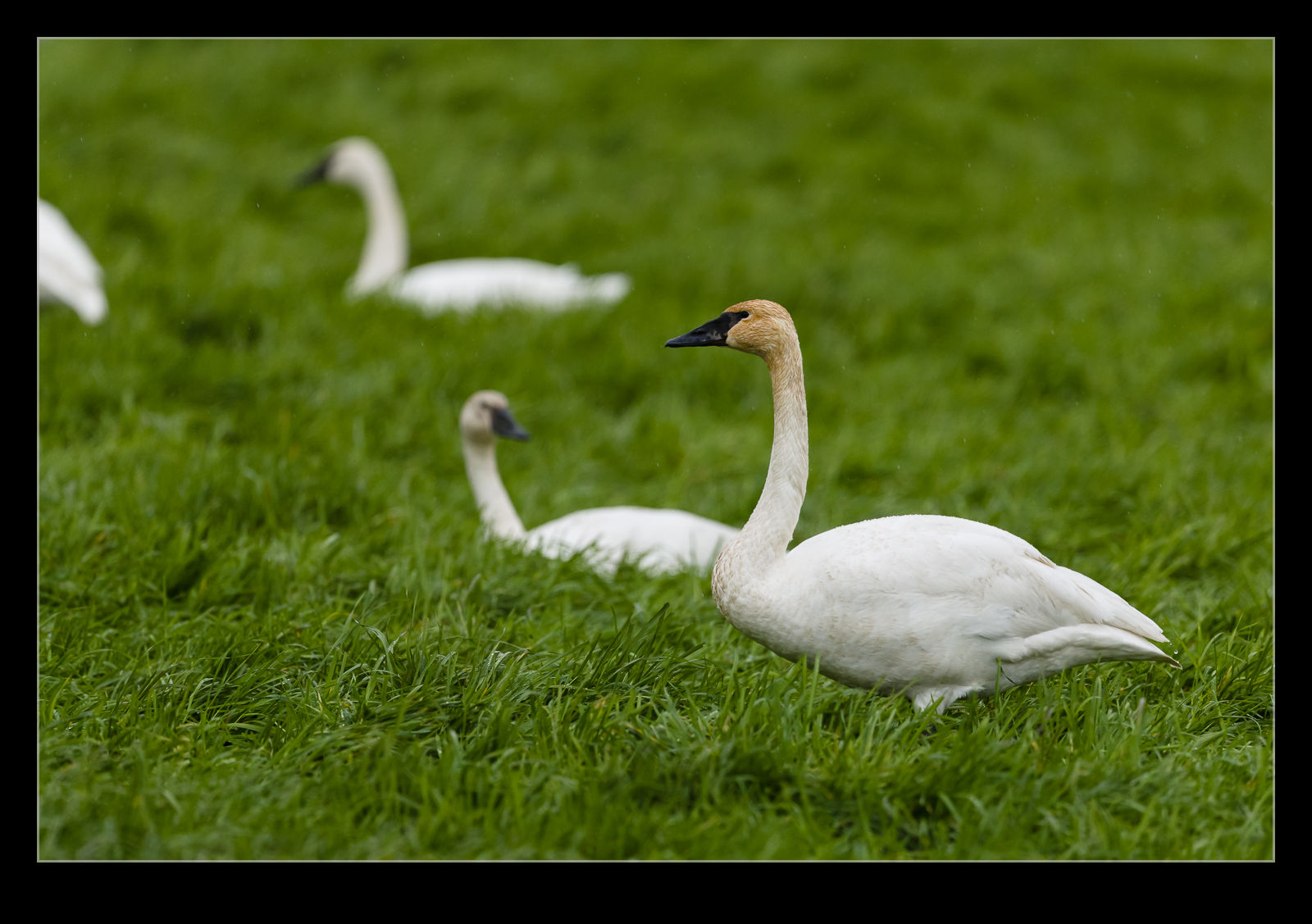 The snow geese are a famous visitor to the Skagit area of Washington but they aren’t the only big birds to show up. Trumpeter swans are also a regular visitor and they are even larger. They don’t have the same social gathering approach as the geese so you won’t see them in their thousands. However, they do sometimes travel in smaller groups.
The snow geese are a famous visitor to the Skagit area of Washington but they aren’t the only big birds to show up. Trumpeter swans are also a regular visitor and they are even larger. They don’t have the same social gathering approach as the geese so you won’t see them in their thousands. However, they do sometimes travel in smaller groups.
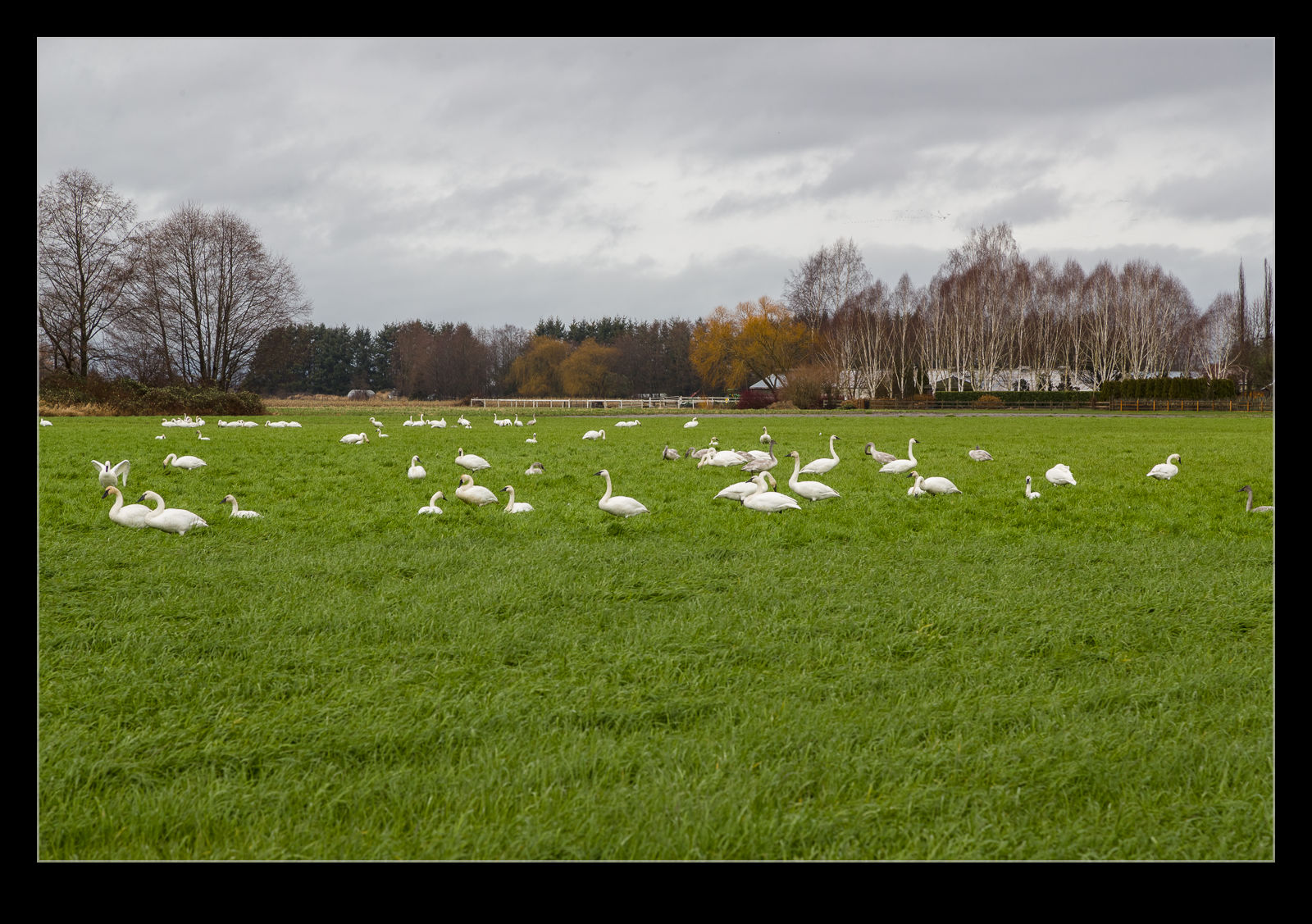 I was driving out towards Fir Island when I passed a bunch of them in a field. They were right next to a church which made for a convenient place to park without being in anyone’s way. They were not far from the parking lot and seemed to be busy feeding. Some immature examples were still showing their grey plumage but were well grown at this point. A little dispute resulted in some noise and flapping of wings but it all settled down quickly when the important matter of eating took over.
I was driving out towards Fir Island when I passed a bunch of them in a field. They were right next to a church which made for a convenient place to park without being in anyone’s way. They were not far from the parking lot and seemed to be busy feeding. Some immature examples were still showing their grey plumage but were well grown at this point. A little dispute resulted in some noise and flapping of wings but it all settled down quickly when the important matter of eating took over.
NOAA Back In Town
 A couple of years ago, a NOAA Gulfstream was operating in the area for a while and I managed to get some shots of it that were shared in this post. That Gulfstream had a couple of interested radomes fitted. Another part of the NOAA fleet is a WP-3D Orion. It also has some interesting radomes and antennae installed. It is based in Florida – there are usually storms to follow on that side of the country. However, the Pacific has its share of storms too and NOAA studies them as well.
A couple of years ago, a NOAA Gulfstream was operating in the area for a while and I managed to get some shots of it that were shared in this post. That Gulfstream had a couple of interested radomes fitted. Another part of the NOAA fleet is a WP-3D Orion. It also has some interesting radomes and antennae installed. It is based in Florida – there are usually storms to follow on that side of the country. However, the Pacific has its share of storms too and NOAA studies them as well.
 Consequently, NOAA recently deployed the WP-3D to Alaska to pay attention to some weather activity out in the ocean. They staged it through Boeing Field to split the journey up there in two. I was waiting for it when it arrived. The conditions had been pretty overcast but, with a late in the day arrival, the cloud cover was starting to break up and the sun popped out just in time for its arrival. An interesting airframe with a nice color scheme. It headed on the following day but I couldn’t be there for that.
Consequently, NOAA recently deployed the WP-3D to Alaska to pay attention to some weather activity out in the ocean. They staged it through Boeing Field to split the journey up there in two. I was waiting for it when it arrived. The conditions had been pretty overcast but, with a late in the day arrival, the cloud cover was starting to break up and the sun popped out just in time for its arrival. An interesting airframe with a nice color scheme. It headed on the following day but I couldn’t be there for that.
Second Go At Old Ship Hulls
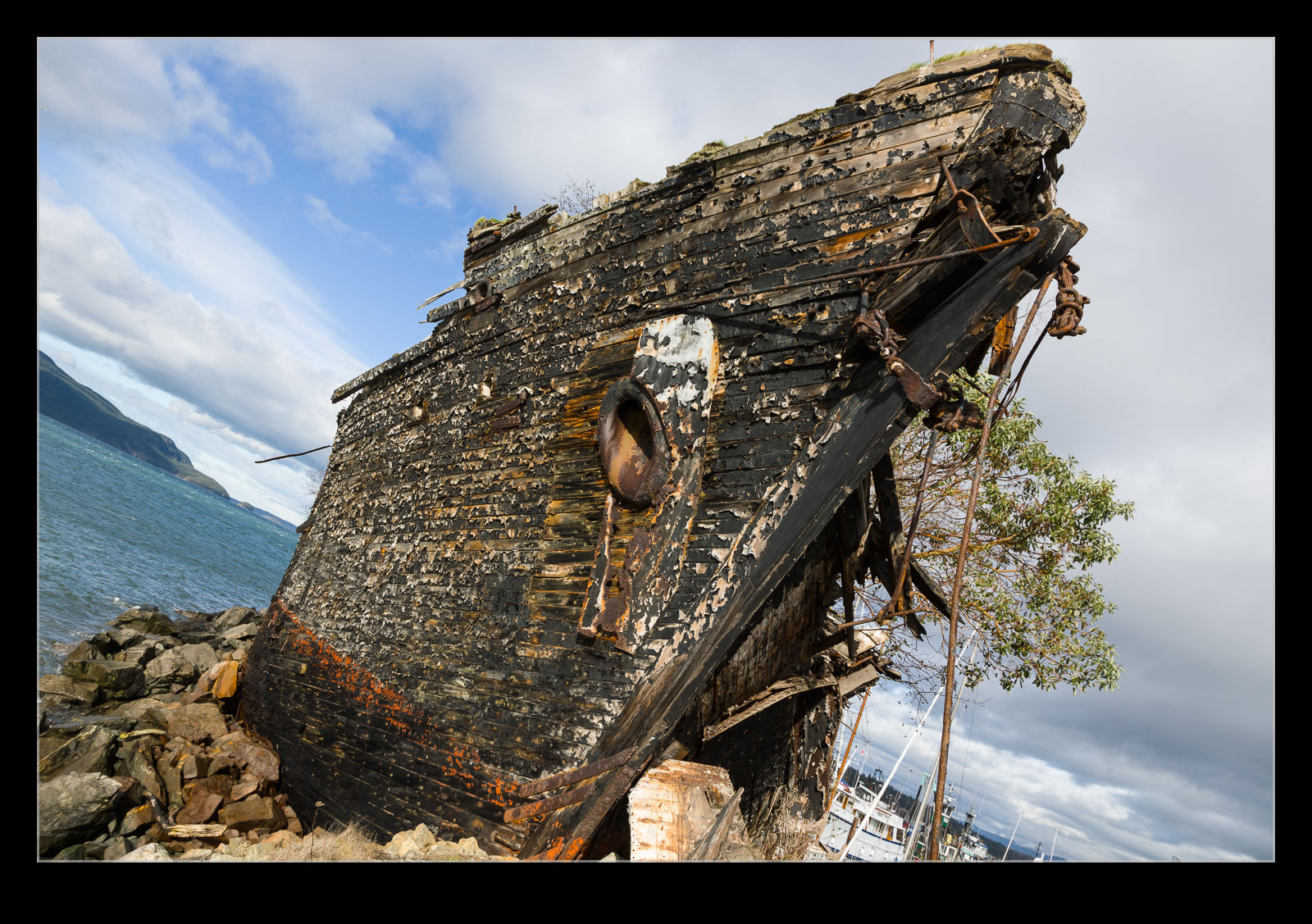 In this previous post, I had some shots of a ship hull in Anacortes that had become part of a harbor wall. When I showed this to a colleague of mine, he looked at Google Maps and thought there might be one or two more hulls making up the harbor. Once I saw what he was looking at, I could see what he was thinking. I also couldn’t work out why I didn’t go down to take a closer look when I had been there. A return journey seemed in order.
In this previous post, I had some shots of a ship hull in Anacortes that had become part of a harbor wall. When I showed this to a colleague of mine, he looked at Google Maps and thought there might be one or two more hulls making up the harbor. Once I saw what he was looking at, I could see what he was thinking. I also couldn’t work out why I didn’t go down to take a closer look when I had been there. A return journey seemed in order.
 First I checked out the original hull and the one that is in the best condition. It looked more impressive when down on its level. I didn’t see any sign of a name which was a shame. Then I went to see what the other areas were. Sure enough, behind the first hull is a second one. This one is much more broken down but the timbers are still there making up another part of the harbor wall. I then realized that a third hull was part of the harbor which we hadn’t seen from Google. That is because it is a barge hull and so square which meant it wasn’t conspicuous from the aerial photos.
First I checked out the original hull and the one that is in the best condition. It looked more impressive when down on its level. I didn’t see any sign of a name which was a shame. Then I went to see what the other areas were. Sure enough, behind the first hull is a second one. This one is much more broken down but the timbers are still there making up another part of the harbor wall. I then realized that a third hull was part of the harbor which we hadn’t seen from Google. That is because it is a barge hull and so square which meant it wasn’t conspicuous from the aerial photos.
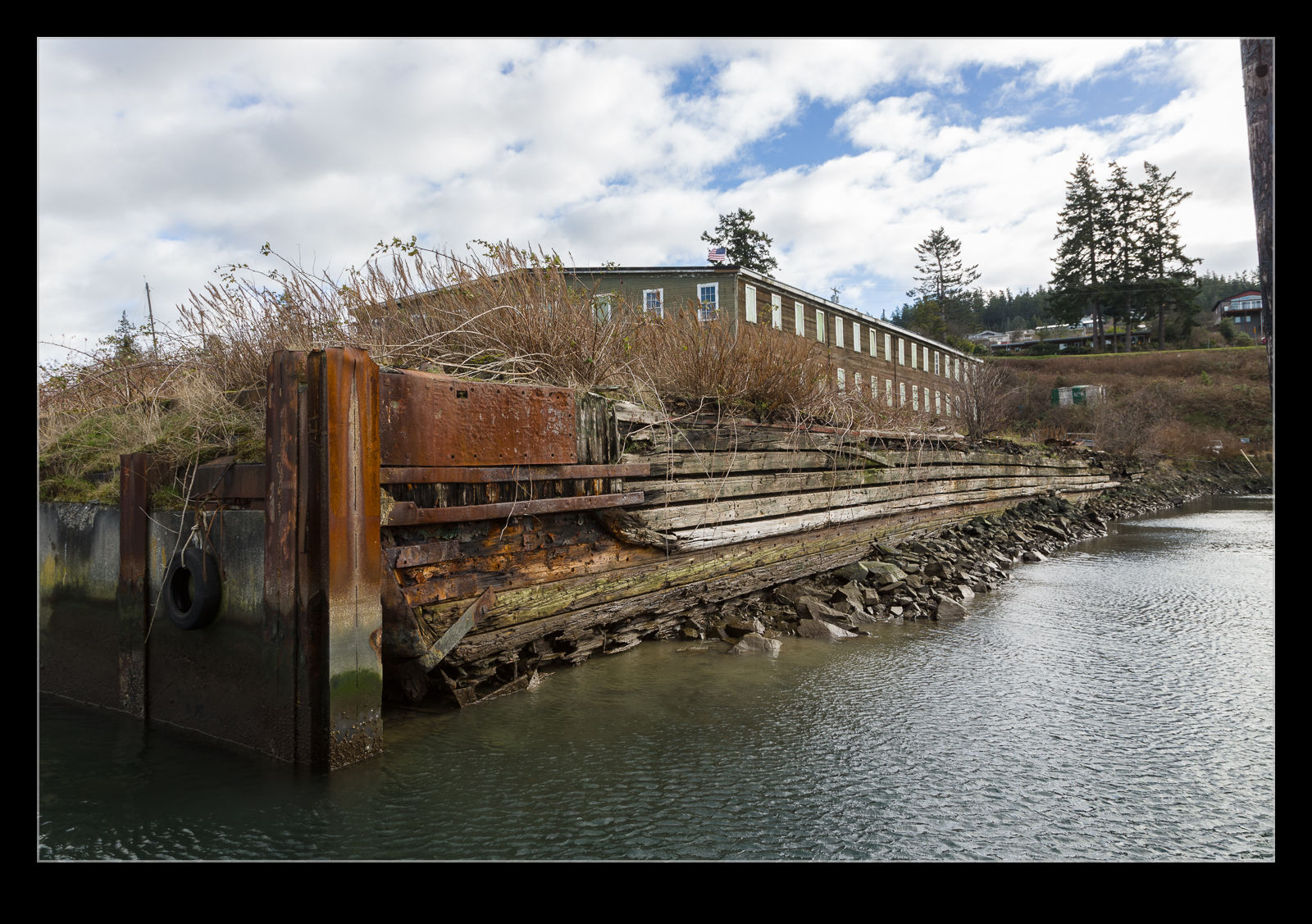 The last hull was located within a shipyard and, since I didn’t have permission to enter their premises, I didn’t go closer to check it out. A look from the access road above it did seem to confirm that it was indeed another hull. I guess whoever created the harbor figured the easiest way to do so was to sink a few derelict hulls and then build up the land around them (or let nature do that for you). I imagine that has been done elsewhere. Not quite the D-Day Mulberries but something similar.
The last hull was located within a shipyard and, since I didn’t have permission to enter their premises, I didn’t go closer to check it out. A look from the access road above it did seem to confirm that it was indeed another hull. I guess whoever created the harbor figured the easiest way to do so was to sink a few derelict hulls and then build up the land around them (or let nature do that for you). I imagine that has been done elsewhere. Not quite the D-Day Mulberries but something similar.
Anchorage Jets
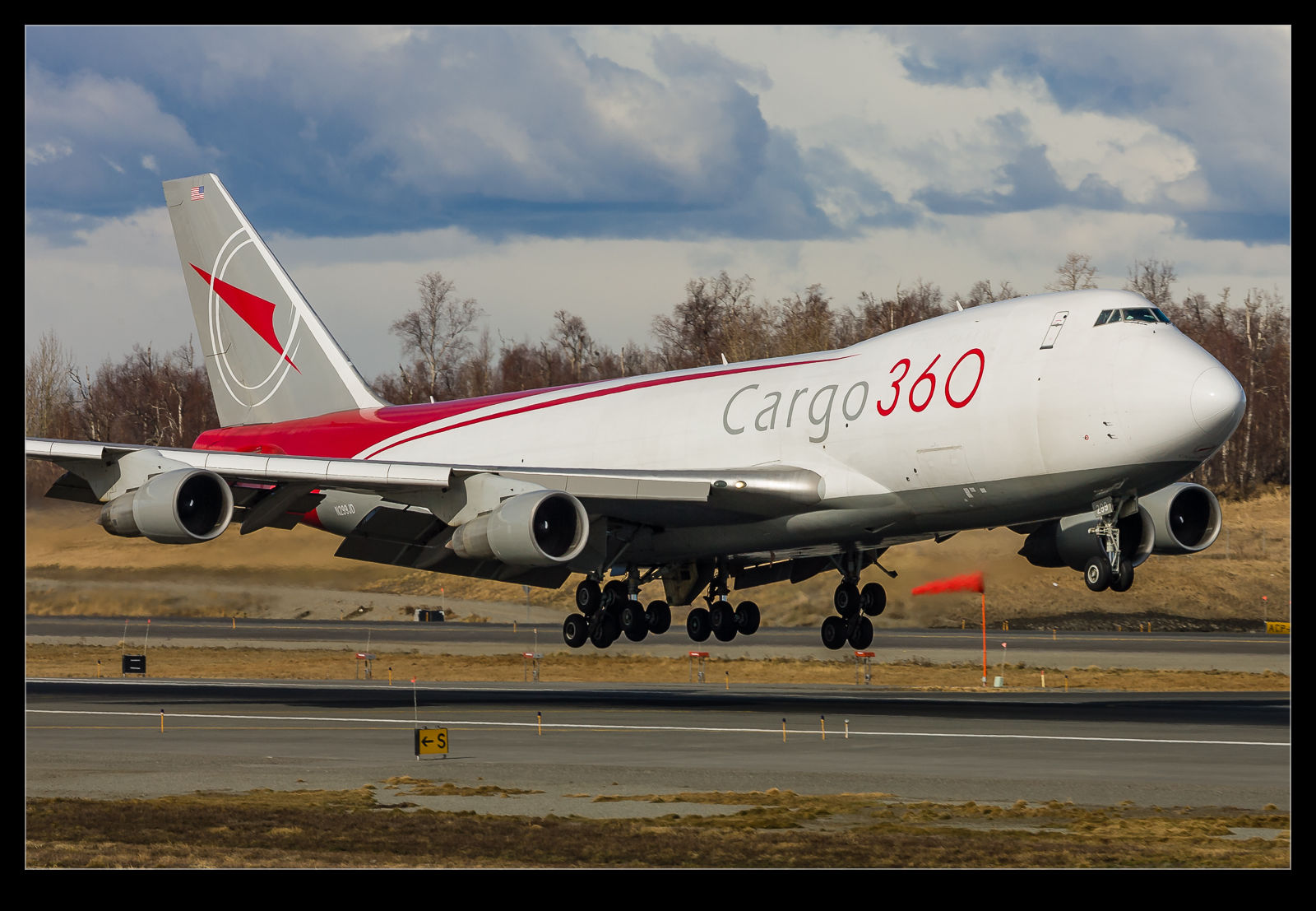 A step back in time to the mid 2000s. I had a work trip to Anchorage having been invited up by a potential client to discuss their business. We lived in Chicago at the time and I needed to fly to Seattle to connect to Anchorage. (Interestingly, the return leg was possible to make direct overnight.). I had not expected Anchorage airport to be too much. I knew, even then, that it was a hub for freight traffic across the Pacific but I did not think it would be that busy.
A step back in time to the mid 2000s. I had a work trip to Anchorage having been invited up by a potential client to discuss their business. We lived in Chicago at the time and I needed to fly to Seattle to connect to Anchorage. (Interestingly, the return leg was possible to make direct overnight.). I had not expected Anchorage airport to be too much. I knew, even then, that it was a hub for freight traffic across the Pacific but I did not think it would be that busy.
 When we landed and I walked down the jet bridge, I looked out of the window to see rows of 747s, MD-11s and DC-10s. It was quite an eye-opener to see just how many large jets were laying over there. There was a steady stream of movements too. These planes were not just waiting around for business. The airport downtown was another reminder with everyone I spoke to in the bar being a crew on layover.
When we landed and I walked down the jet bridge, I looked out of the window to see rows of 747s, MD-11s and DC-10s. It was quite an eye-opener to see just how many large jets were laying over there. There was a steady stream of movements too. These planes were not just waiting around for business. The airport downtown was another reminder with everyone I spoke to in the bar being a crew on layover.
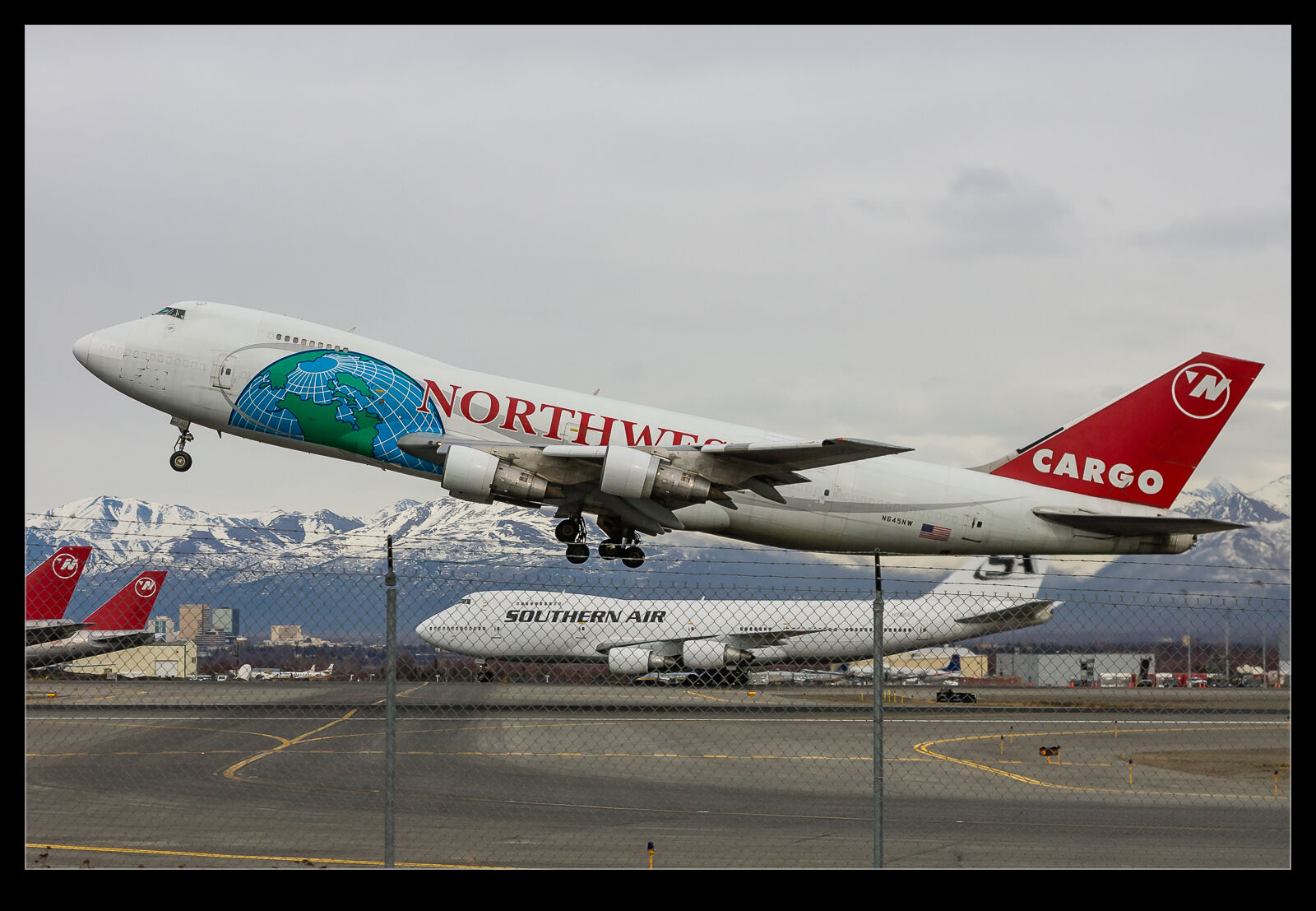 The meetings went well but didn’t lead to anything. The timing of the trips meant I had some time to kill so I spent a bit of time out at the airport watching the arrivals and departures. There were the unusual locals that Alaska is known for and the props will definitely be worth a separate post. For this one I shall share the jets that came and went. Many of these are types or operators that have ceased to be. It was a great thing to see and I’m glad I got the chance to be there, however briefly. A specific trip up is something I would like to try and do at some point. All those Alaska Airlines points have got to be worth something!
The meetings went well but didn’t lead to anything. The timing of the trips meant I had some time to kill so I spent a bit of time out at the airport watching the arrivals and departures. There were the unusual locals that Alaska is known for and the props will definitely be worth a separate post. For this one I shall share the jets that came and went. Many of these are types or operators that have ceased to be. It was a great thing to see and I’m glad I got the chance to be there, however briefly. A specific trip up is something I would like to try and do at some point. All those Alaska Airlines points have got to be worth something!
Fauntleroy Terminal
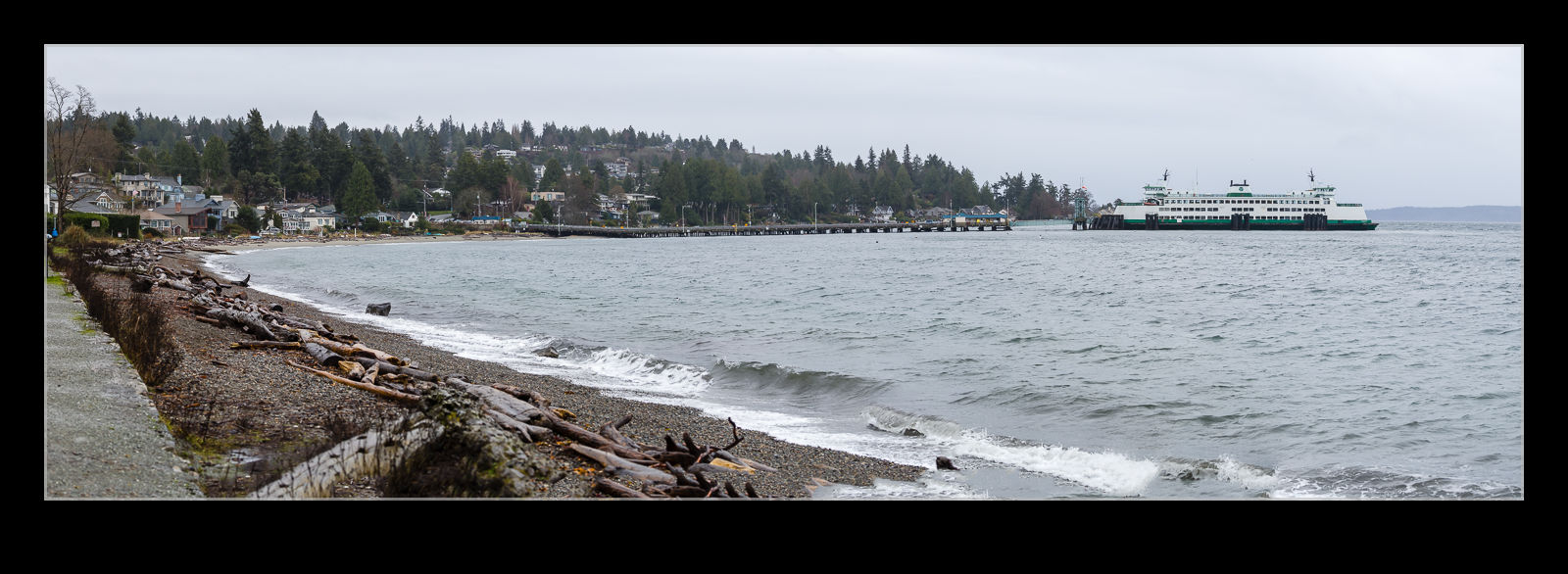 Continuing my lockdown hobby of checking out ferry services, I took a trip to West Seattle to see the terminal for Washington State Ferries at Fauntleroy. The service here goes to Vashon Island and Southworth – trips that I have yet to make but I would like to go cycling on Vashon at some point so I might get to use it then. I chose a pretty unpleasant day to make my trip there. Winter doesn’t provide reliable weather but the weekend is the only free time so you get what you are given.
Continuing my lockdown hobby of checking out ferry services, I took a trip to West Seattle to see the terminal for Washington State Ferries at Fauntleroy. The service here goes to Vashon Island and Southworth – trips that I have yet to make but I would like to go cycling on Vashon at some point so I might get to use it then. I chose a pretty unpleasant day to make my trip there. Winter doesn’t provide reliable weather but the weekend is the only free time so you get what you are given.
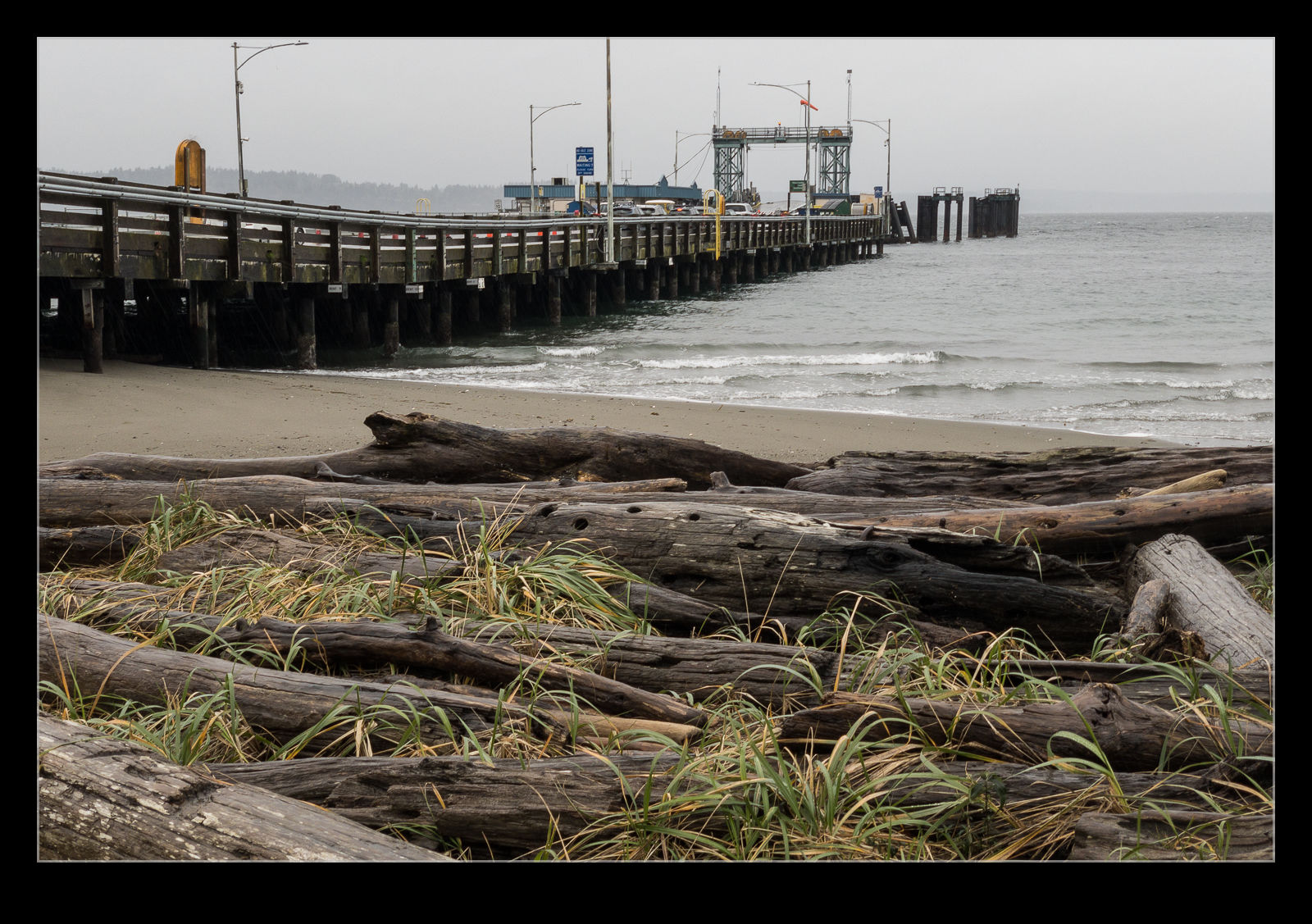 The terminal is right next to Lincoln Park. I walked through the park to the water and strolled along the shore. A ferry was heading out at this time and, since the schedule was quite infrequent at that time of day, that was all I got to see move. I walked along the water and back to the road heading down to the terminal itself. It is not much of a terminal to be honest. Some holding lanes for the cars and not a lot else. Compared to the new Mukilteo terminal it is very low key. There is a little public park and beach just below the terminal which I briefly checked out but the increasing intensity of the rain meant I didn’t stay around too long!
The terminal is right next to Lincoln Park. I walked through the park to the water and strolled along the shore. A ferry was heading out at this time and, since the schedule was quite infrequent at that time of day, that was all I got to see move. I walked along the water and back to the road heading down to the terminal itself. It is not much of a terminal to be honest. Some holding lanes for the cars and not a lot else. Compared to the new Mukilteo terminal it is very low key. There is a little public park and beach just below the terminal which I briefly checked out but the increasing intensity of the rain meant I didn’t stay around too long!
Tailskid On A 777X
 There is plenty of the 777X on this blog. The delays for the test programs and the likelihood that service entry will slip in to 2024 means that test aircraft are all that is going to be available for a while yet. Even so, with four test aircraft in use, there is plenty of test activity underway. One of the more dramatic testing processes is the minimum unstick testing.
There is plenty of the 777X on this blog. The delays for the test programs and the likelihood that service entry will slip in to 2024 means that test aircraft are all that is going to be available for a while yet. Even so, with four test aircraft in use, there is plenty of test activity underway. One of the more dramatic testing processes is the minimum unstick testing.
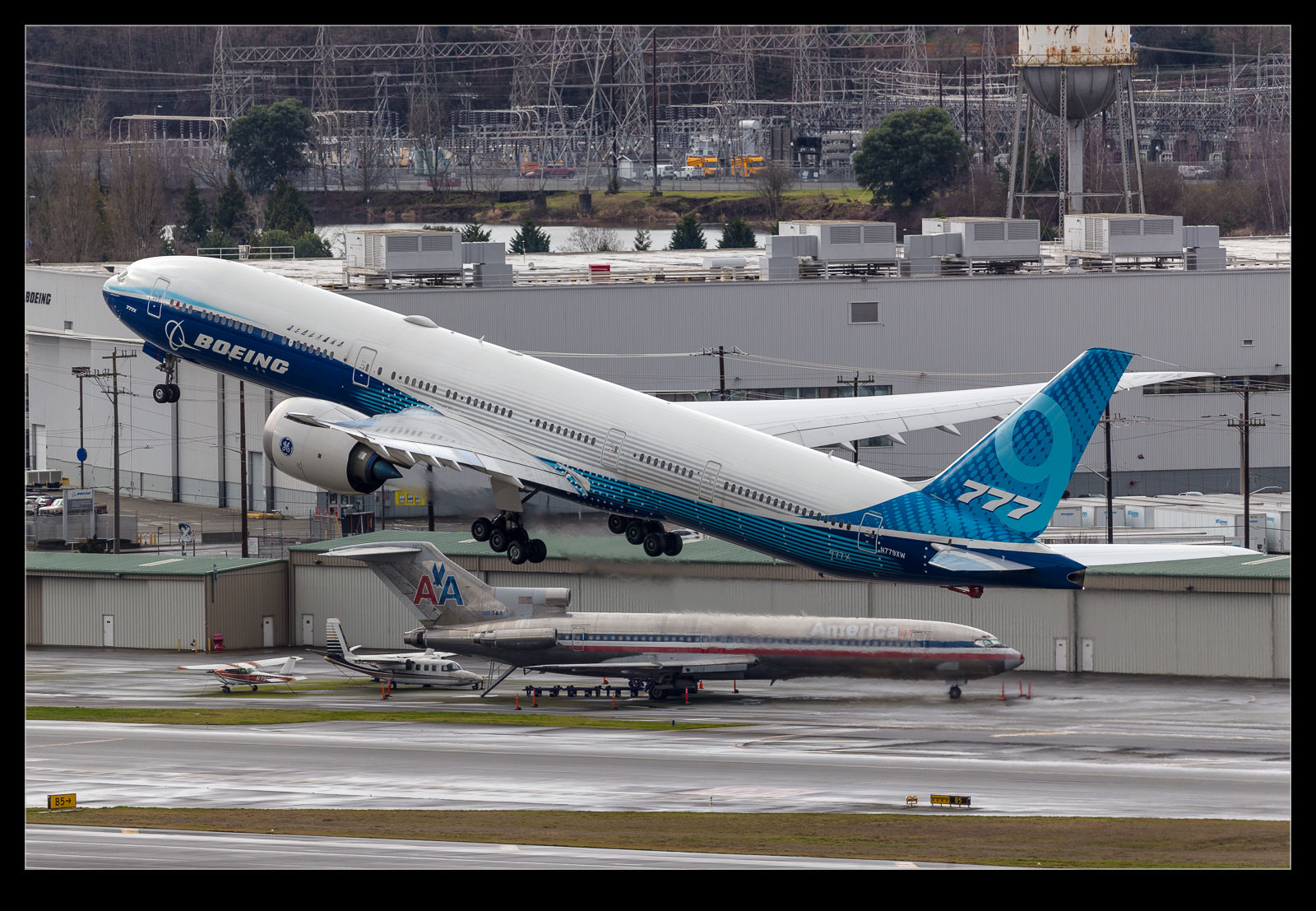 The test is to determine the maximum lift at takeoff in various configurations. This allows calculation of the required take off speeds and the runway distance required. The test involves accelerating the aircraft more slowly than usual and pulling the noise fully up. The tail is dragged along the runway and the aircraft will then get airborne once it reaches sufficient speed.
The test is to determine the maximum lift at takeoff in various configurations. This allows calculation of the required take off speeds and the runway distance required. The test involves accelerating the aircraft more slowly than usual and pulling the noise fully up. The tail is dragged along the runway and the aircraft will then get airborne once it reaches sufficient speed.
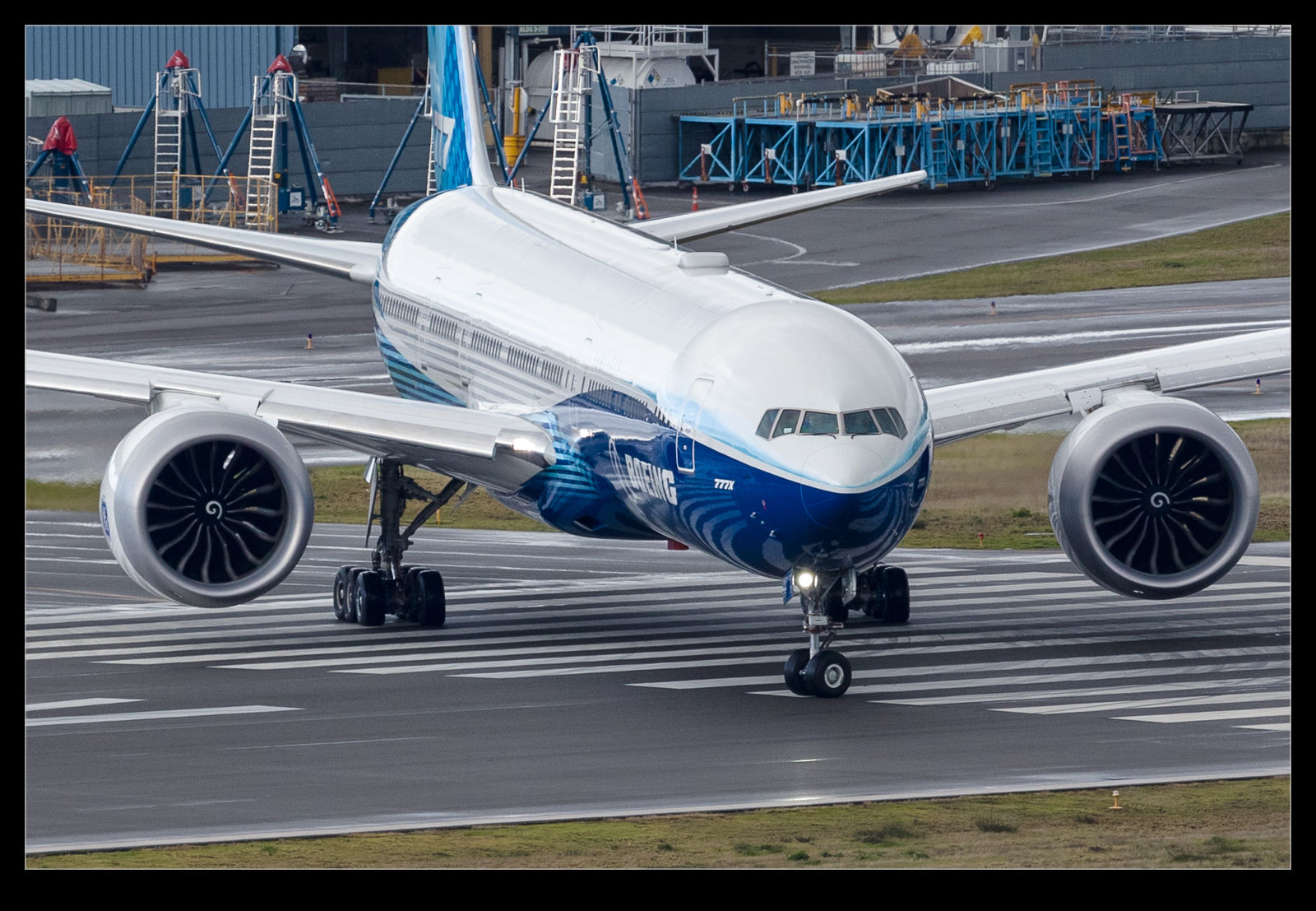 The test requires a decent runway length and, presumably, nothing much off the end should anything go awry. To protect the aircraft, a tailskid is fitted to the rear fuselage to allow the crew to drag it along the runway surface without damaging the airframe. The skid frame is a metallic structure but I am not sure what the wearing surface is for the 777X. In the past, wood has been used as the abradable element.
The test requires a decent runway length and, presumably, nothing much off the end should anything go awry. To protect the aircraft, a tailskid is fitted to the rear fuselage to allow the crew to drag it along the runway surface without damaging the airframe. The skid frame is a metallic structure but I am not sure what the wearing surface is for the 777X. In the past, wood has been used as the abradable element.
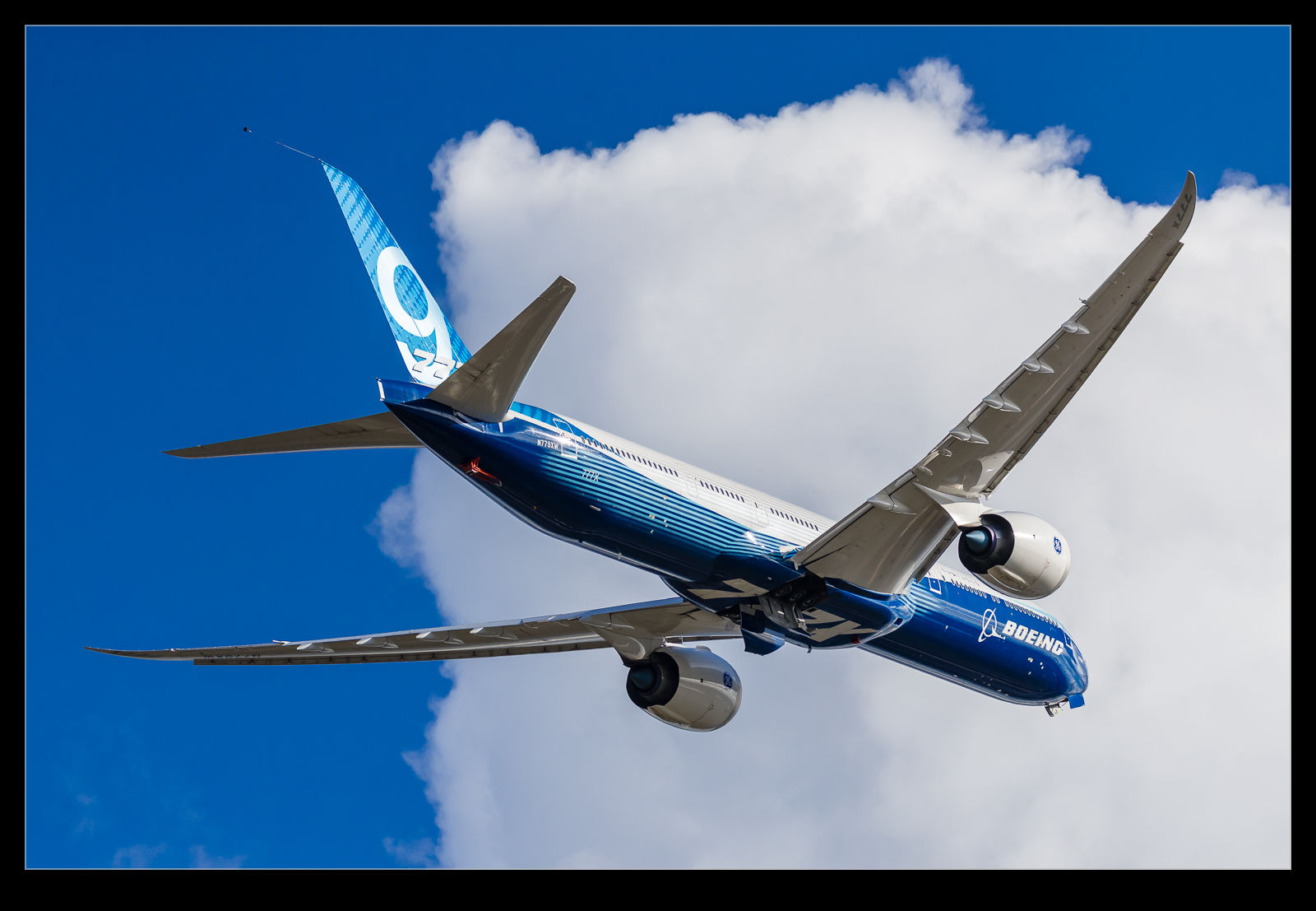 WH001, the first 777-9 airframe, is the one that is going to be used for these tests. It has been fitted with the skid. I’m not sure whether the testing is already underway or whether it is ready for future use. I shot it on departure on a couple of occasions.
WH001, the first 777-9 airframe, is the one that is going to be used for these tests. It has been fitted with the skid. I’m not sure whether the testing is already underway or whether it is ready for future use. I shot it on departure on a couple of occasions.
Unusual Patterns on an Old Log
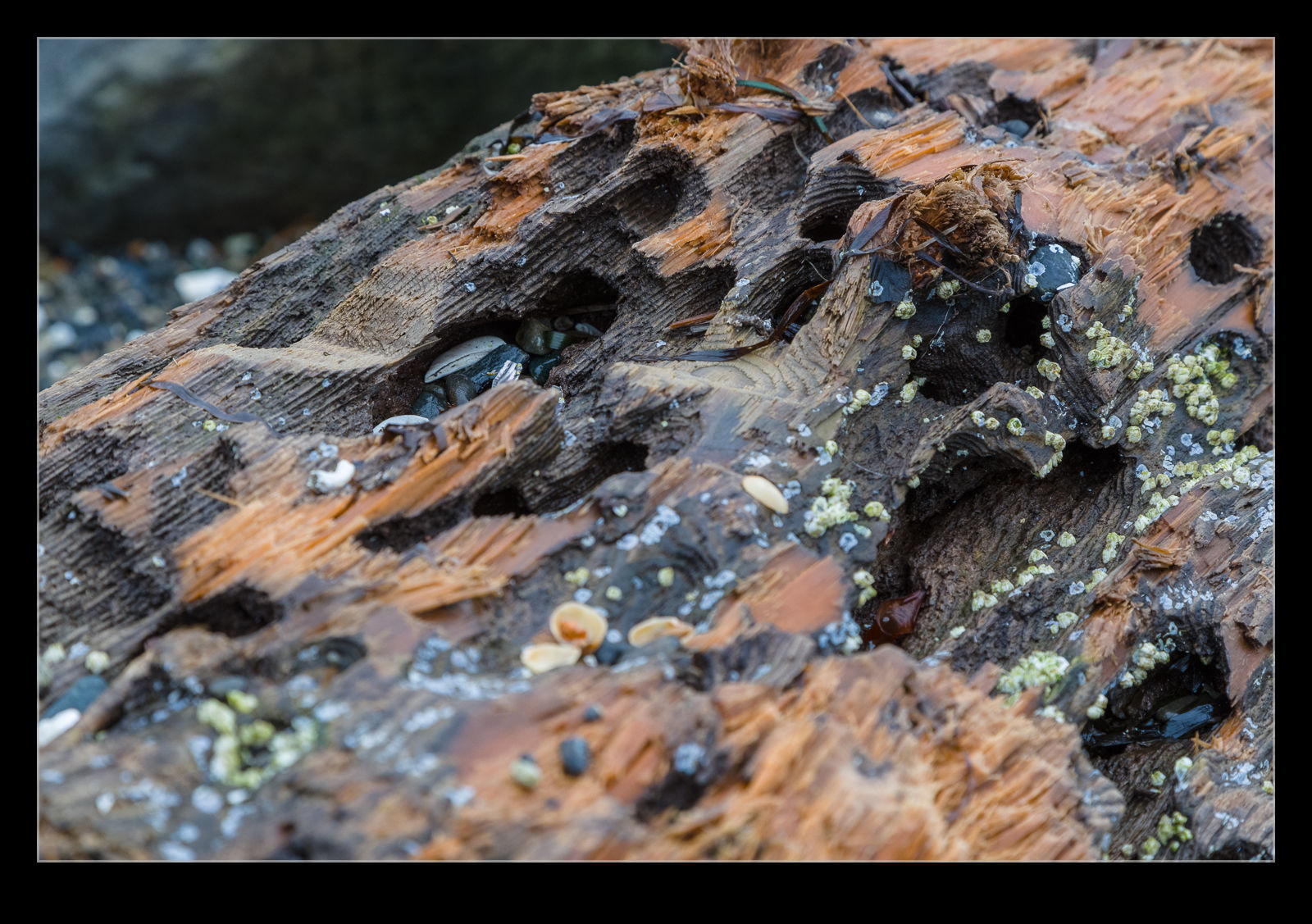 I was walking along the shore and saw a log that had clearly been in the water and then out of it for a long time. All sorts of things had happened to the wood. Some of it looked like it had worn away while other marks suggested that creatures had been chewing their way through. Some wildlife was still clearly living on the surface and in the nooks and crannies. It was such an unusual looking log I just couldn’t avoid taking some pictures.
I was walking along the shore and saw a log that had clearly been in the water and then out of it for a long time. All sorts of things had happened to the wood. Some of it looked like it had worn away while other marks suggested that creatures had been chewing their way through. Some wildlife was still clearly living on the surface and in the nooks and crannies. It was such an unusual looking log I just couldn’t avoid taking some pictures.
